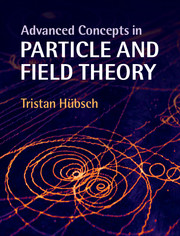Book contents
- Frontmatter
- Epigraph
- Contents
- Preface
- I Preliminaries
- II The Standard Model
- III Beyond the Standard Model
- 8 Unification: the fabric of understanding Nature
- 9 Gravity and the geometrization of physics
- 10 Supersymmetry: boson–fermion unification
- 11 Strings: unification of all foundations of reality
- IV Appendices
- A Groups: structure and notation
- B A lexicon
- C A few more details
- References
- Index
10 - Supersymmetry: boson–fermion unification
from III - Beyond the Standard Model
- Frontmatter
- Epigraph
- Contents
- Preface
- I Preliminaries
- II The Standard Model
- III Beyond the Standard Model
- 8 Unification: the fabric of understanding Nature
- 9 Gravity and the geometrization of physics
- 10 Supersymmetry: boson–fermion unification
- 11 Strings: unification of all foundations of reality
- IV Appendices
- A Groups: structure and notation
- B A lexicon
- C A few more details
- References
- Index
Summary
The previous chapters, and foremost Chapter 8, show that the development of fundamental physics is inherently based on the idea of unification, and in three related but distinct ways [Conclusion 8.1 on p. 300]. However, one aspect remains in which the objects in fundamental physics, as discussed so far, remain separated:
The basic building blocks of matter – quarks and leptons – have spin ½ħ and so are fermions: they are subject to Pauli's exclusion principle (no two fermions can coexist in the same state) and an ensemble of fermions obeys the Fermi–Dirac statistics.
Interaction mediators – gauge and Higgs fields – have integral spin and so are bosons: not subject to Pauli's exclusion principle, their ensemble obeys the Bose–Einstein statistics; infinitely many bosons in the same state form a Bose condensate.
Digression 10.1 The following parallel practically suggests itself:
Subject to Pauli's exclusion principle, two fermions cannot be simultaneously in the same quantum state, i.e., “in the same place” in the Hilbert space – just as in classical physics two material objects cannot be simultaneously in the same place in the real space.
Not subject to Pauli's exclusion principle, two bosons can be simultaneously in the same quantum state, i.e., “in the same place” in the Hilbert space – just as in classical physics two interaction fields can be simultaneously in the same place in the real space.
Also, matter (substance) elementary particles are fermions, and mediating elementary particles of interaction fields are bosons [Table 2.3 on p. 67]. As if, by extending classical physics into quantum, we transported the “events” of physics from spacetime into the Hilbert space.
This chapter offers a brief review of the only possible way to bridge this last divide: the symmetry transformations that change bosons into fermions and back. The so-extended symmetries of spacetime are called supersymmetries.
- Type
- Chapter
- Information
- Advanced Concepts in Particle and Field Theory , pp. 357 - 396Publisher: Cambridge University PressPrint publication year: 2015

